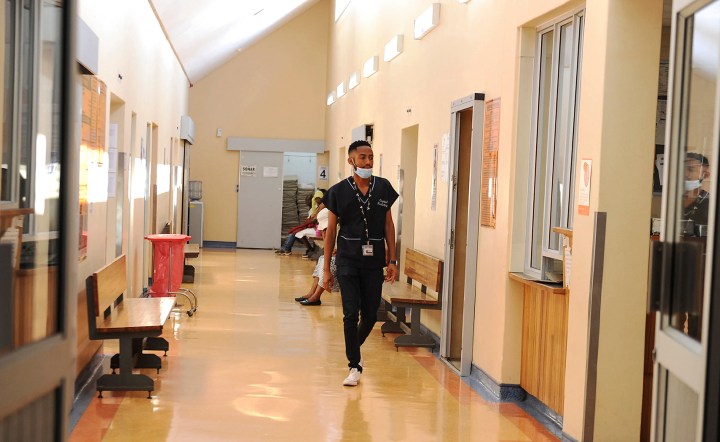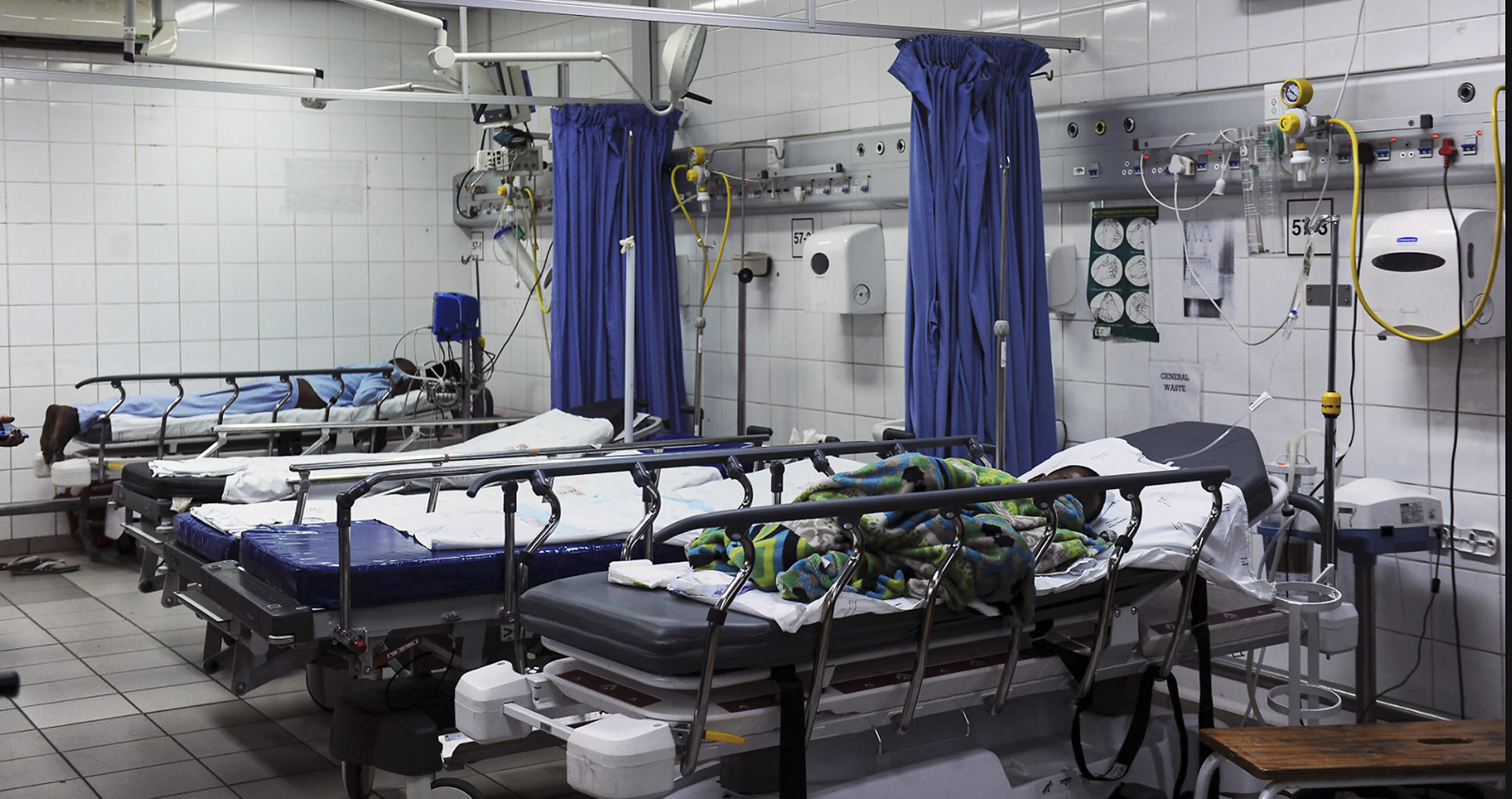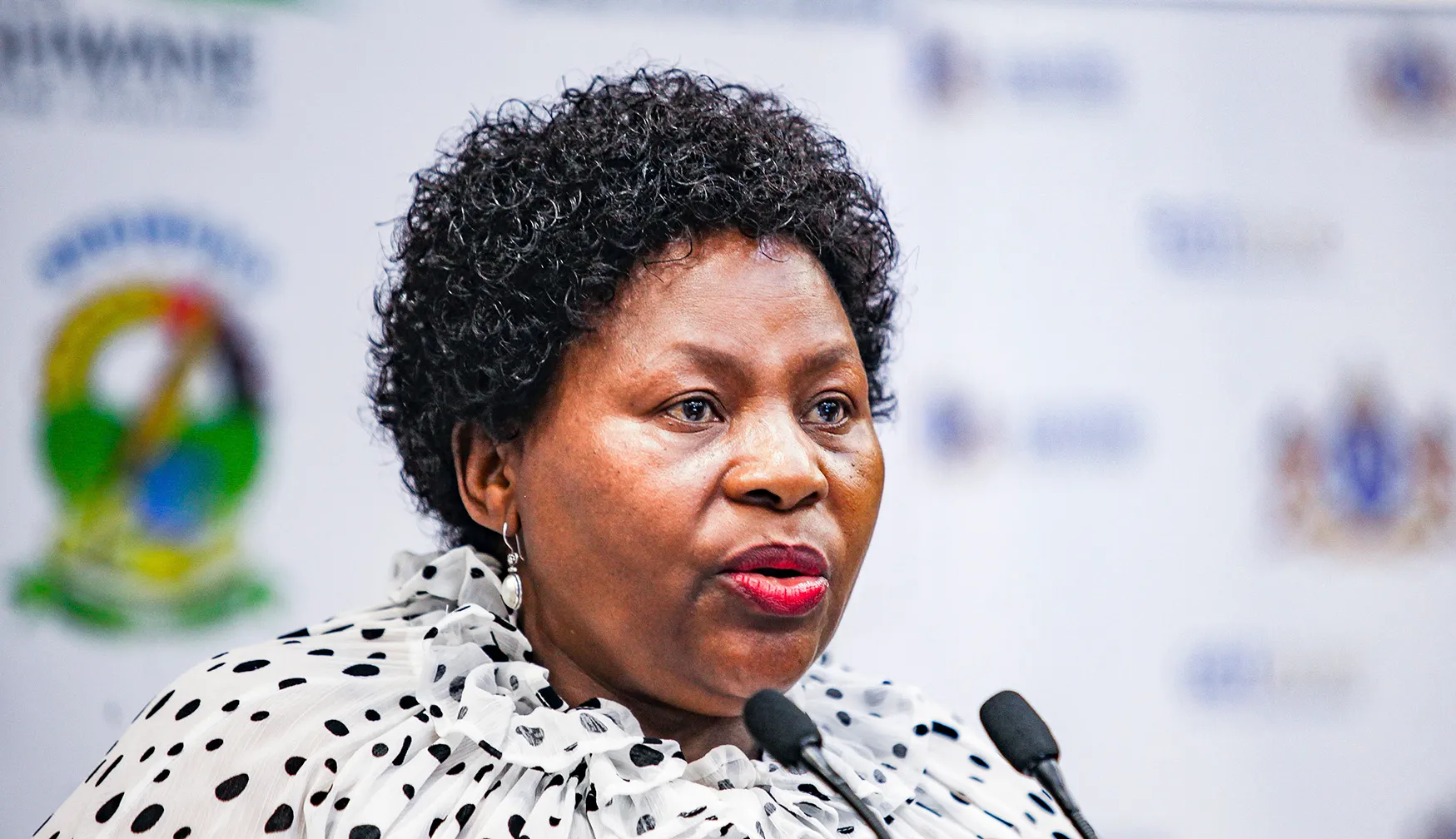SPOTLIGHT
Gauteng’s public hospitals: Shocking number of patients suffer serious adverse events every year

The rate of serious adverse events resulting in unintended harm to patients is disturbingly high in Gauteng public hospitals. Thabo Molelekwa spoke to health activists and government to find out what is causing these risky events and what is being done to curb them.
Since giving birth by Caesarean section last year at Tembisa Hospital, 20-year-old Mpho Nombewu says she has suffered painful complications. Nombewu has been advised by different doctors to return to the facility where she gave birth. But Nombewu refuses, telling Spotlight she is scared she might die due to Tembisa Hospital’s reputation for patients suffering serious adverse events (SAEs).
SAEs in this context refers to events that result in unintended harm to a patient because of something that was or wasn’t done as part of a patient’s care, rather than as the result of the underlying disease or condition of the patient. (This KwaZulu-Natal government document explores the concept in detail.)
Nombewu says a few days after giving birth she went back to the hospital to have the stitches removed. She says the nurse was rough. Weeks went by. “The pain did not stop, the [wound] where there were stitches started to smell.”
She says the doctors she consulted told her they were unable to help her “because it was too dangerous and they were scared that if anything happened, the blame would be on them”.
“This thing is painful, but I’m scared of going back to Tembisa Hospital. I’m scared of losing my life… or them causing more damage than they have already done,” she says.

Last year, 1,226 serious adverse events were reported at Tembisa Hospital. (Photo: Rosetta Msimango / Spotlight)
Health department intervenes
After Spotlight contacted the Gauteng health department regarding Nombewu’s case, the department got in touch with her and scheduled an appointment for Friday, 4 June.
Department spokesperson Kwara Kekana says a senior obstetrician and gynaecologists at the hospital will do a comprehensive assessment and look at the history of the case.
“Following the consultation on 4 June, a way forward and [a] management plan will be discussed with the patient and options offered at other institutions should the patient still prefer not to be managed at Tembisa Hospital,” says Kekana, adding that the clinical manager of the hospital would ensure that the patient received the appropriate management.
Alarming numbers
There are numbers backing up Nombewu’s concerns about Tembisa Hospital. According to figures released by Gauteng health MEC Nomathemba Mokgethi in a written answer to a question in the Gauteng legislature earlier, Tembisa Hospital tops the list of facilities in Gauteng with the most reported SAEs. Last year, 1,226 SAE were reported at the hospital.
In January, the Health Ombud also made a finding against Tembisa Hospital, one of the province’s Covid-19 designated facilities, after a patient died due to respiratory problems.
Mokgethi said SAEs in Gauteng public hospitals have risen from 4,170 in 2019 to 4,701 last year. Some hospitals, such as Edenvale Hospital, recorded dramatic increases from 13 in 2019 to 129 last year. Similarly, the number of SAEs at Leratong Hospital shot up from 61 in 2019 to 197 in 2020.
The MEC did not provide details of the nature of the adverse events recorded and said the information is “highly voluminous” and would require extra human resources to retrieve and compile.
But DA MPL Jack Bloom, who posed the question in the legislature, tells Spotlight that years of mismanagement at every level lie at the root of SAEs in Gauteng health facilities.
“Staff and equipment shortages also play a role. There have been very few disciplinary consequences for SAEs, and so they continue,” he says, adding that “a major failing is in maternity wards, which is why there are so many brain-damaged babies”.

DA MPL Jack Bloom says years of mismanagement and staff shortages are at the root of the increase in serious adverse events in Gauteng hospitals. (Photo: Thom Pierce / Spotlight)
Errors and consequences
Speaking to Spotlight, the national chairperson of the Treatment Action Campaign, Sibongile Tshabalala, says one of the reasons SAEs are not decreasing is that they are not managed appropriately when they occur.
“Adverse events need to be followed by prompt transparent communication, which will lead to learning from these events. We have seen intentional cover-ups and delays in clear communication about harm to patients in the province, taking away the opportunity to learn, improve and anticipate such errors in future,” she says.
“It seems obvious to us that it’s better to anticipate errors than to react to the aftermath. This is what the department of health should be doing.
“For example, the case of Shonisani Lethole, who died at Tembisa Hospital… It took months for the investigation to yield results that put the hospital at fault. This should have been a good opportunity for the hospital and others to improve their systems and bring the culprits, including the facility manager, to book,” says Tshabalala.
Tshabalala says to err is human, but what happens after the error is what makes the difference. Things should improve. She says SAEs are mostly caused by negligence, arrogance and a lack of regard for patient dignity by healthcare workers in Gauteng facilities.
“[But] as much as healthcare workers have been seen to contribute significantly to SAEs, we cannot deny the role of system failures in the department – from poor clinical management, operating outside guidelines, to massive staff shortages. Human resources constraints are also an issue,” says Tshabalala.
Intervene earlier to reduce costs
According to Russell Rensburg of the Rural Health Advocacy Project, a lot of the issues relate to poor management and control on one hand, and the absence of a regulatory framework to govern the management of medical malpractice on the other.
Gauteng has among the highest levels of medico-legal claims faced by provincial health departments in South Africa (many of these claims would be due to SAEs).
Earlier this year, the Auditor-General said the Gauteng health department’s budget for claims in 2019/20 was R2.6-million, but it paid out claims of R501-million for the year. These claims put a huge strain on already limited health budgets.
Rensburg says the department can improve clinical and administrative management as many of the claims are not defended – the records are not well kept or go missing.
“You will recall the ombudsman’s recent Tembisa Hospital report which highlighted poor record-keeping (the medical officers did not update files). Second, it can improve the management liability associated with malpractice.”
Rensburg adds that he does not think the province will ever have no adverse events, but by intervening earlier, the department can reduce the costs.
Provincial interventions
Gauteng health spokesperson Kekana, however, attributes the increase in the number of SAEs to their improved reporting and monitoring system that is linked to the national database on the ideal clinic website. She says the quality assurance offices in hospitals have been strengthened with personnel who capture incidents on the ideal clinic website as and when they are reported.
Kekana says that SAEs, among others, are due to human error, system failures, patient factors and reckless behaviour. But she says there are interventions the department has implemented to address and curb the SAEs.
“The SAEs are investigated and quality improvement plans developed for each case investigated. In cases of human error, corrective measures such as further training are instituted. In system failure, quality improvement plans are developed and implemented to strengthen processes.
“In case of patient factors, the patient is provided with health education and counselling, and where reckless behaviour is the contributory factor, the case is referred to the labour relations and statutory councils for further management.”
In her written reply, Mokgethi said the department established SAE/patient safety incidents committees in all hospitals and district health services to discuss and resolve all SAEs. She said they re-established mandatory clinical governance structures (mortality and morbidity) for all to provide support, learning platforms and influence decisions that inform clinical care.
The department has also conducted various SAE awareness campaigns for hospitals and district health services staff and management to enhance vigilance in identifying clinical risks and improve prompt decision-making to manage them.
According to Kekana, the staff members involved in the incident submit incident reports to the quality assurance manager. The incident is then acknowledged and disclosed to the patient or family. The SAE is then investigated and a comprehensive investigation report is generated. The SAE investigation report is presented to the facility’s SAE committee to decide whether to redress the patient/family and close the SAE or escalate the SAE to the provincial quality assurance and legal services.
“According to the national guideline for patient safety, incident reporting and learning in the public health sector of South Africa, the SAE must be finalised within 60 days,” Kekana says.

Gauteng Health MEC Nomathemba Mokgethi says her department established SAE/patient safety incidents committees in all hospitals. (Photo: Gallo Images / Sharon Seretlo)
Process at the Health Professions Council of SA
Spokesperson for the Health Professions Council of SA (HPCSA), Priscilla Sekhonyana, explains the process of investigating these cases.
“In terms of investigating a case, the complaints handling and investigation division will assign the complaint to the investigator to conduct an investigation in terms of section 41 of the Health Professions Act, where an explanation will be required from the practitioner and any other evidential material from any person.
“If the practitioner poses [an] imminent risk to members of the public, then a precautionary suspension will be recommended pending an investigation,” she says.
“The whole process of preliminary investigation could take up to 24 months depending on the seriousness of the case and all procedures to be followed.”
There are then various actions the HPCSA can take depending on the nature of the transgressions, which can include a reprimand, suspension for a specified period from practising their profession, removal of a name from the register, or a fine. DM/MC
Note: Someone from the Treatment Action Campaign (TAC) is quoted in this article. Spotlight is published by SECTION27 and the TAC, but is editorially independent, independence that the editors guard jealously. Spotlight is a member of the South African Press Council.
This article was produced by Spotlight – health journalism in the public interest.





















 Become an Insider
Become an Insider
Comments - Please login in order to comment.